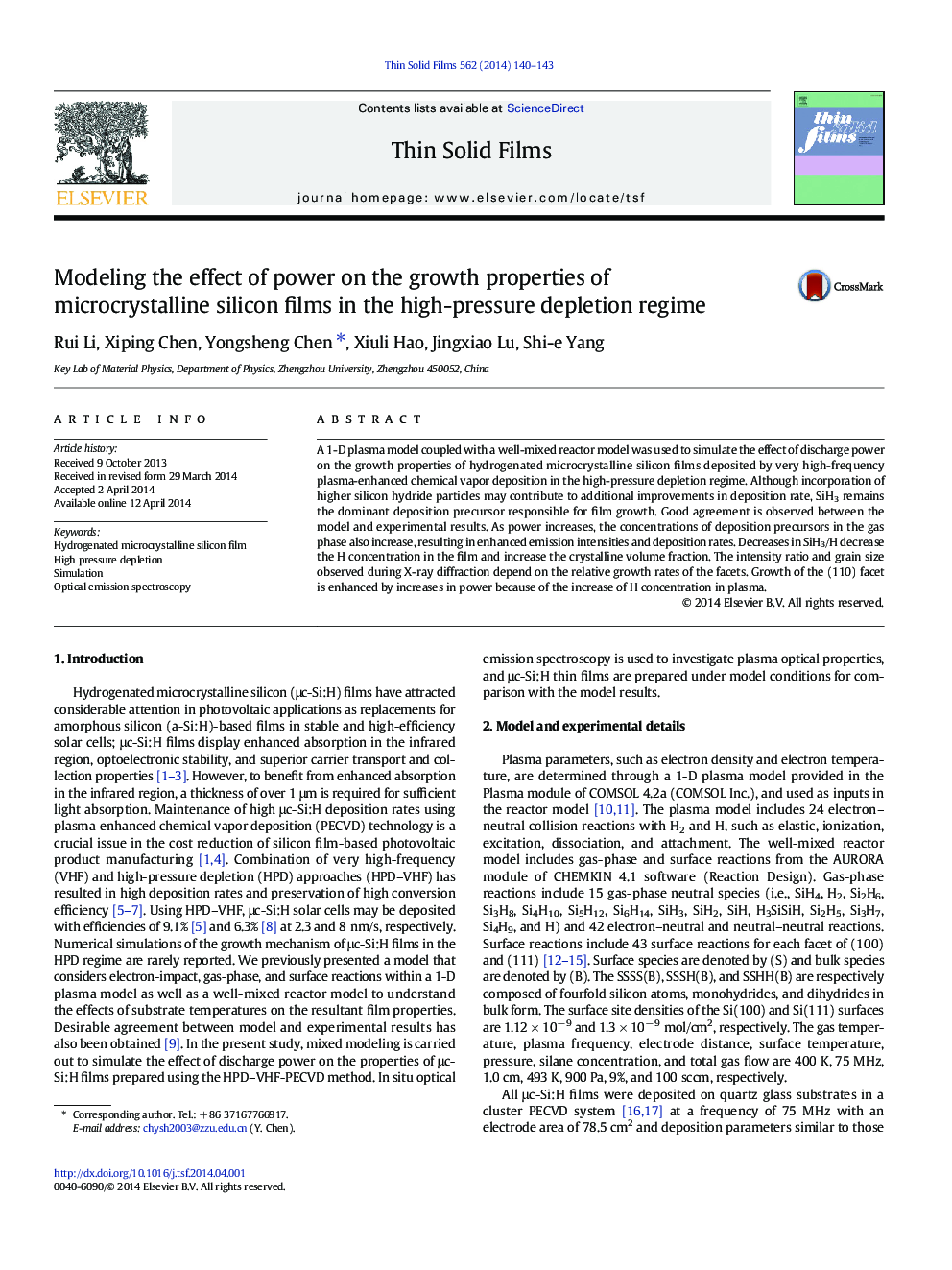| Article ID | Journal | Published Year | Pages | File Type |
|---|---|---|---|---|
| 1665166 | Thin Solid Films | 2014 | 4 Pages |
Abstract
A 1-D plasma model coupled with a well-mixed reactor model was used to simulate the effect of discharge power on the growth properties of hydrogenated microcrystalline silicon films deposited by very high-frequency plasma-enhanced chemical vapor deposition in the high-pressure depletion regime. Although incorporation of higher silicon hydride particles may contribute to additional improvements in deposition rate, SiH3 remains the dominant deposition precursor responsible for film growth. Good agreement is observed between the model and experimental results. As power increases, the concentrations of deposition precursors in the gas phase also increase, resulting in enhanced emission intensities and deposition rates. Decreases in SiH3/H decrease the H concentration in the film and increase the crystalline volume fraction. The intensity ratio and grain size observed during X-ray diffraction depend on the relative growth rates of the facets. Growth of the (110) facet is enhanced by increases in power because of the increase of H concentration in plasma.
Related Topics
Physical Sciences and Engineering
Materials Science
Nanotechnology
Authors
Rui Li, Xiping Chen, Yongsheng Chen, Xiuli Hao, Jingxiao Lu, Shi-e Yang,
